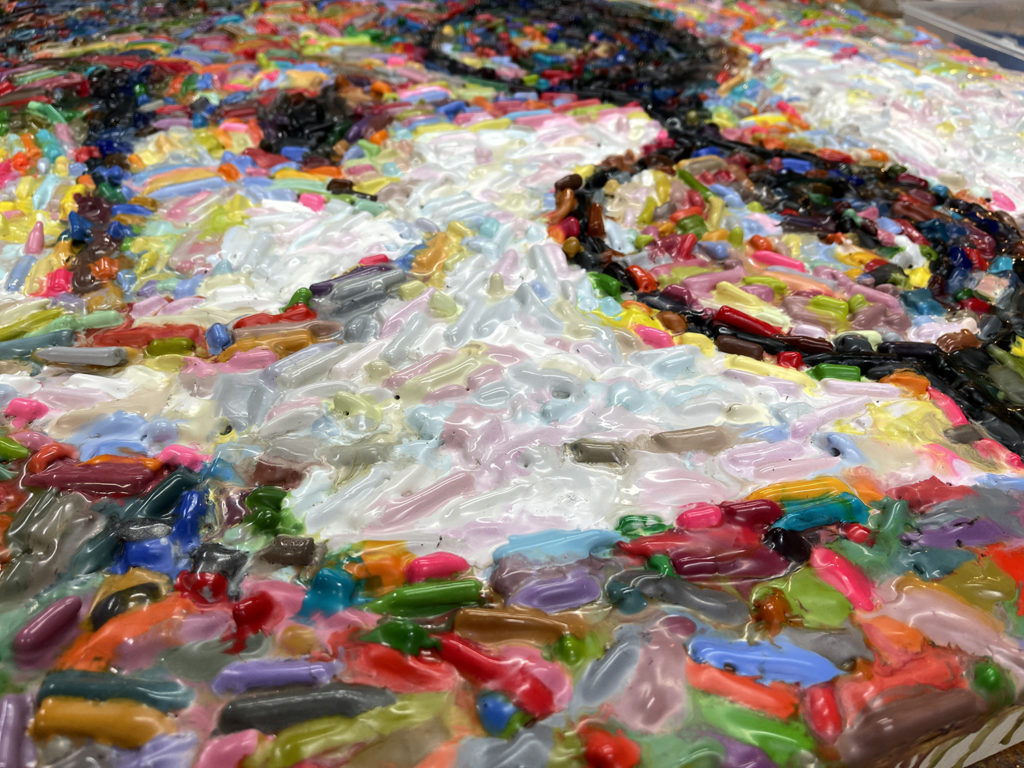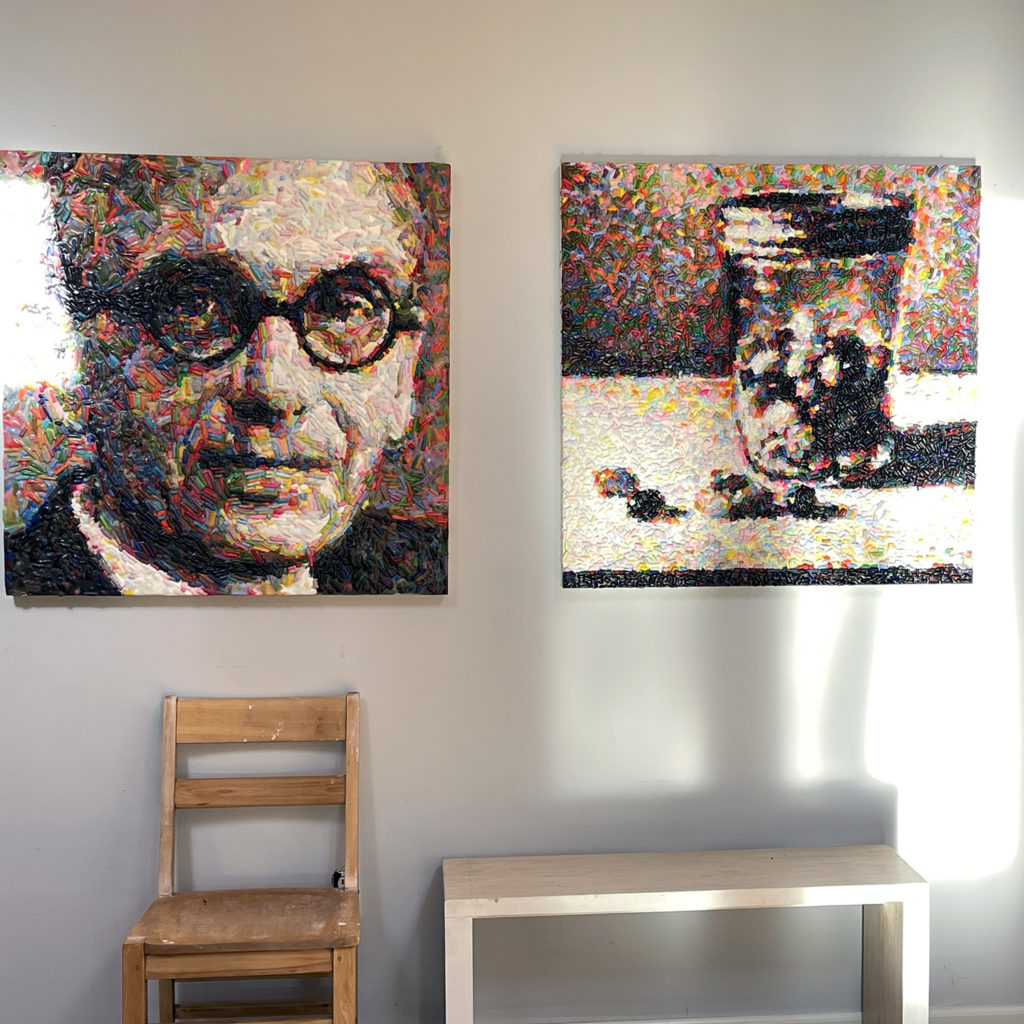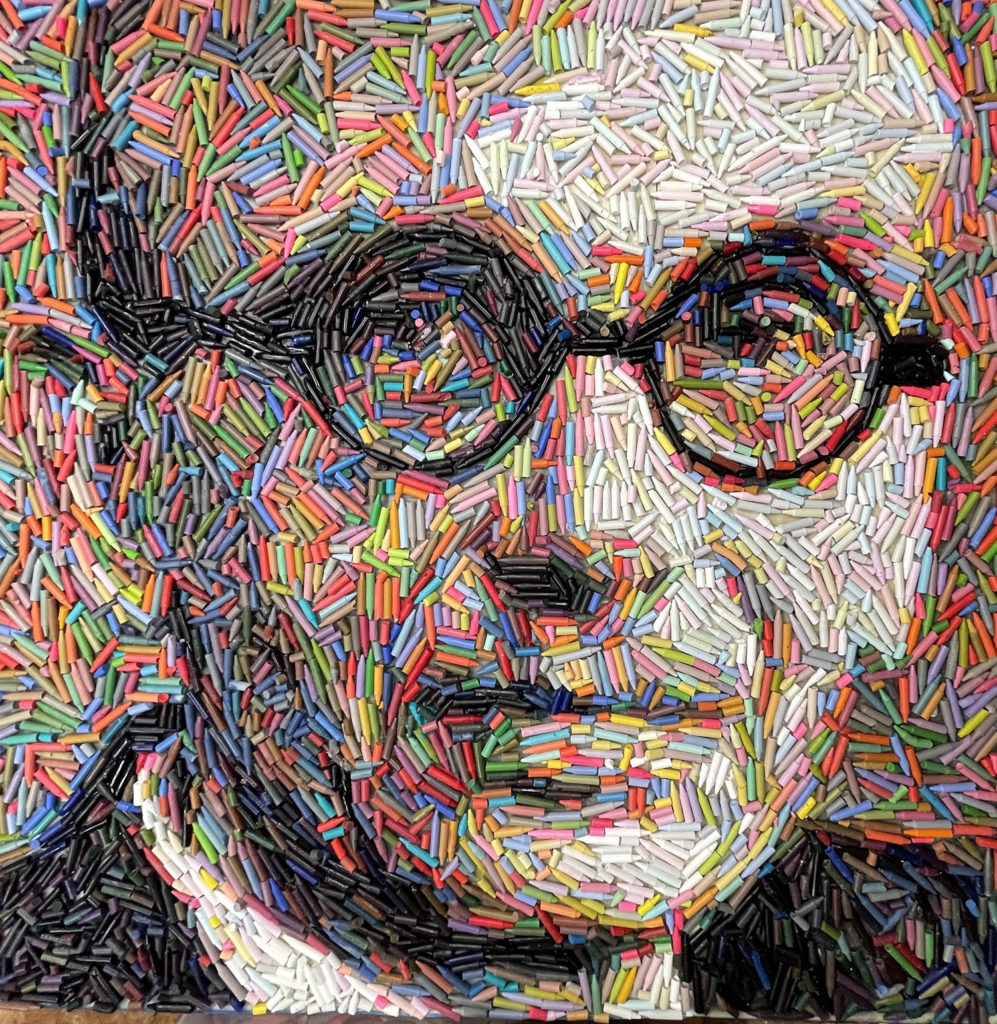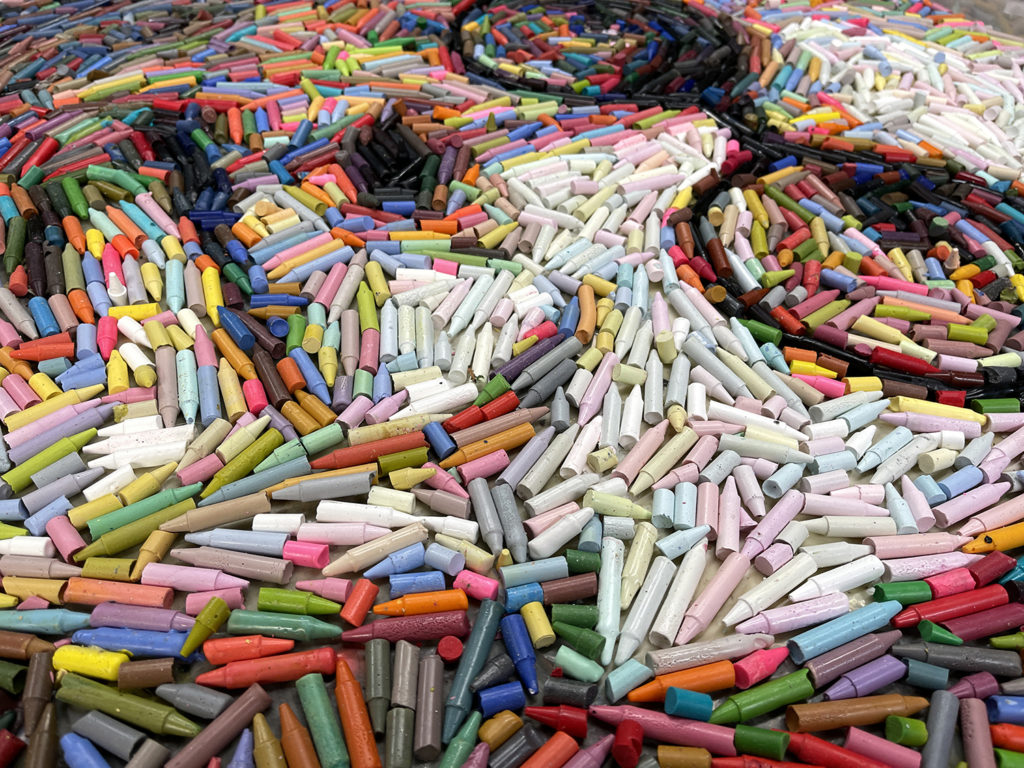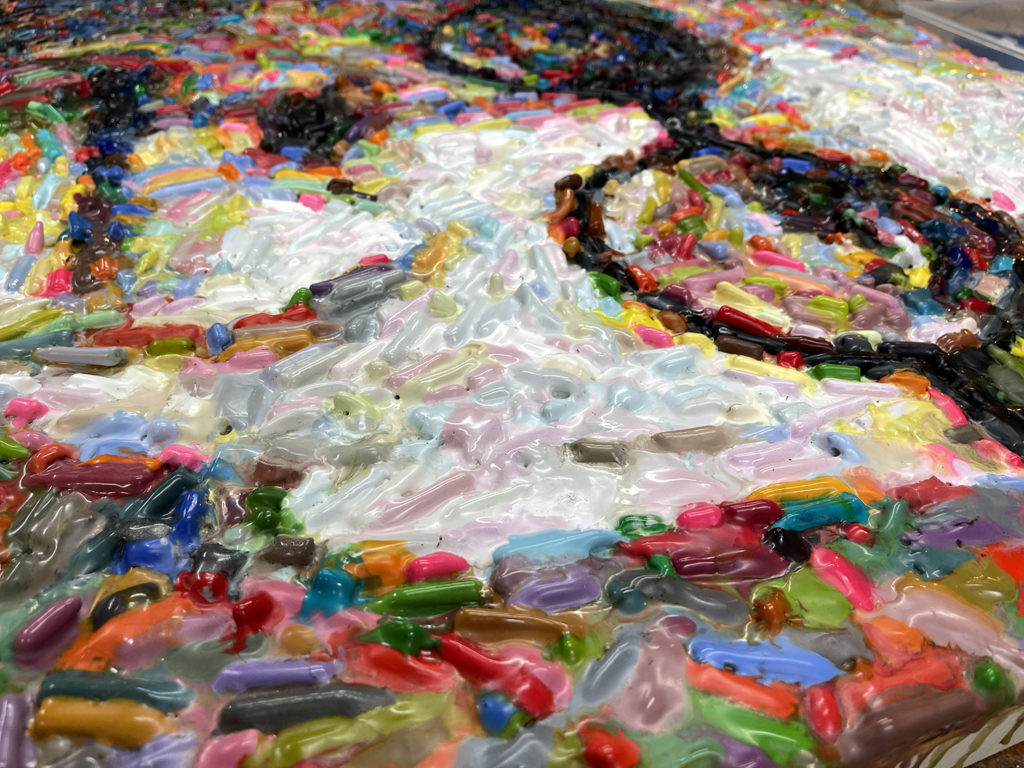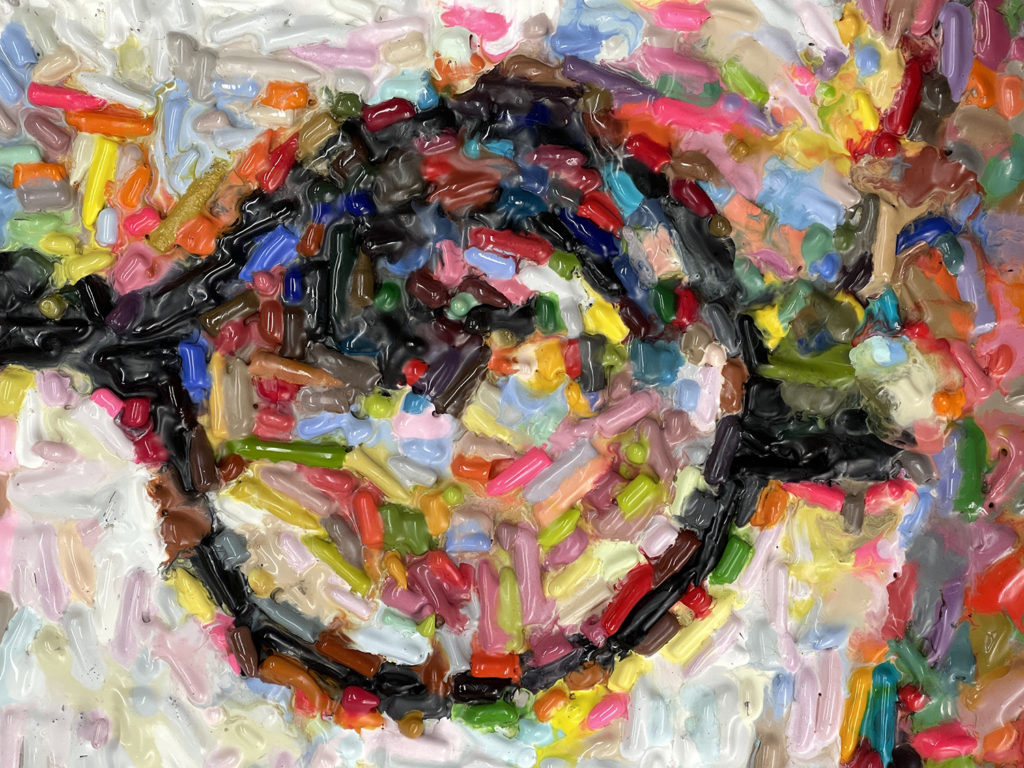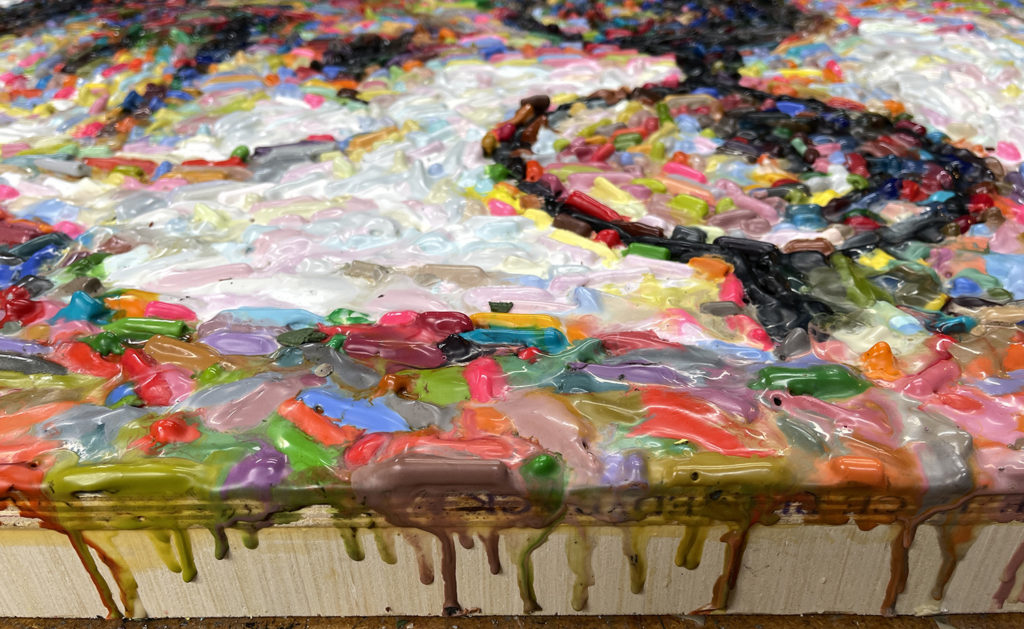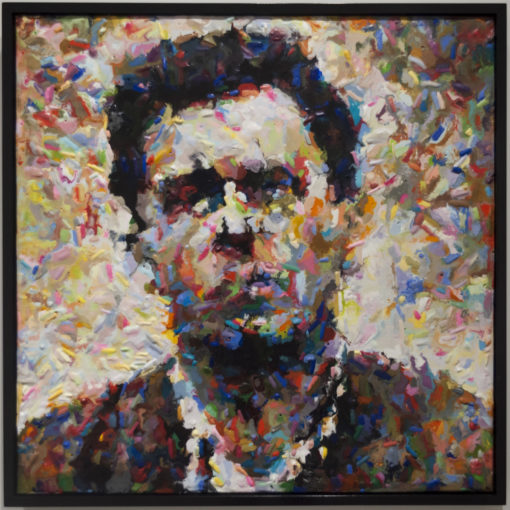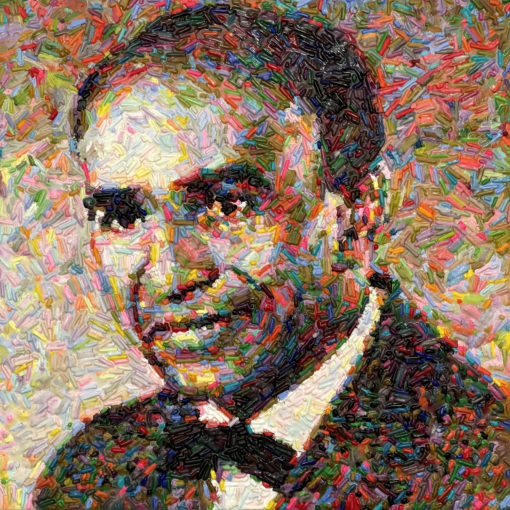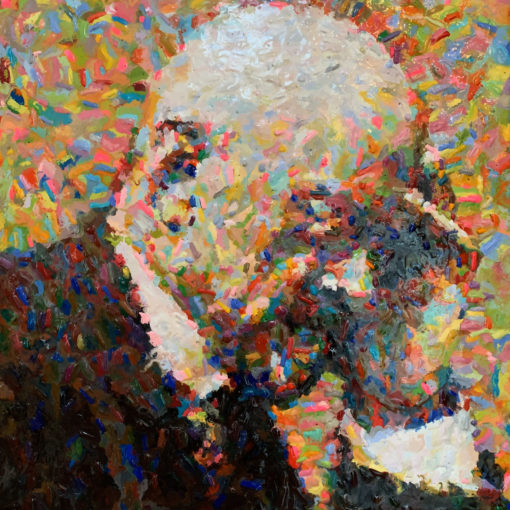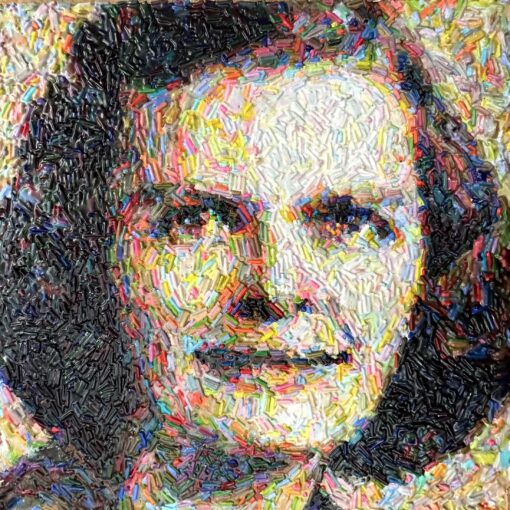Kurt Gödel (Mathematician Series) –36×36”
Melted hand cast encaustic crayons
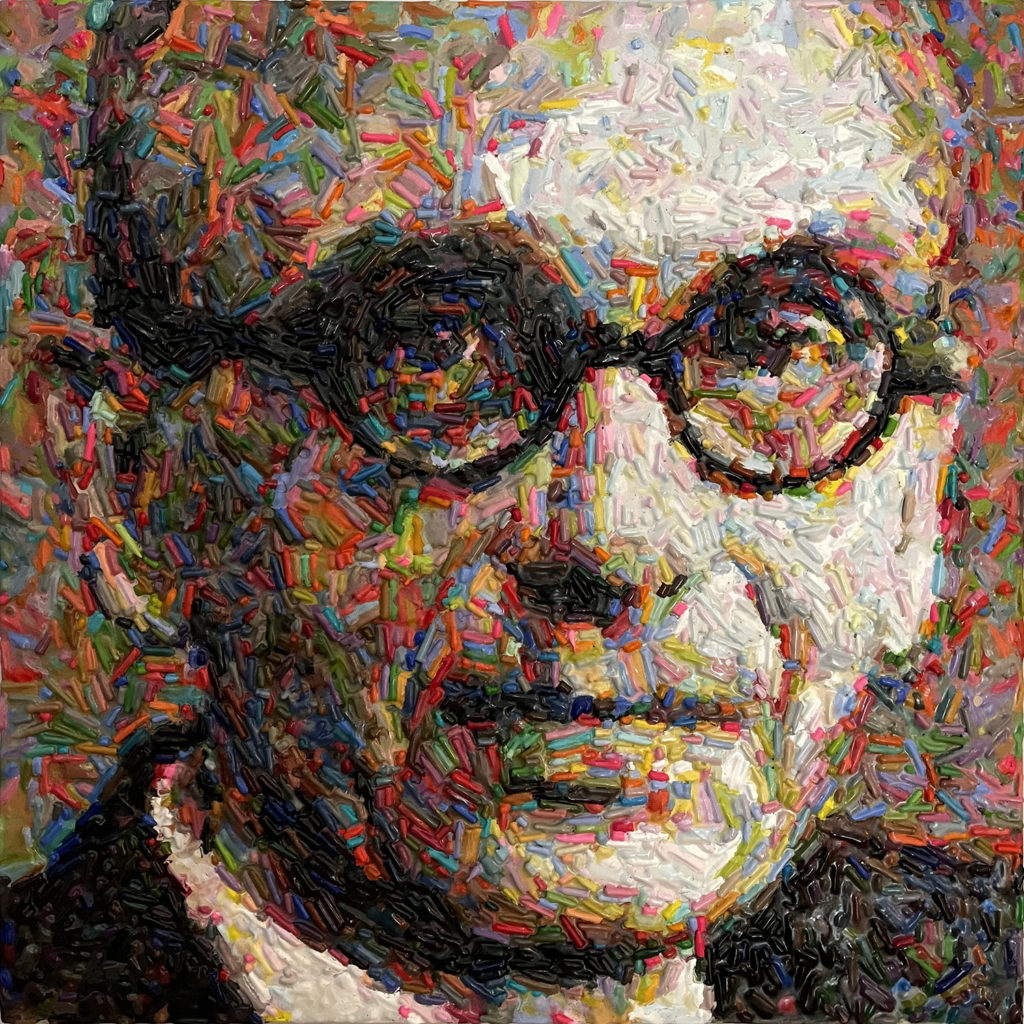
Kurt Gödel (1906 – 1978) was born in what is now Brno, Czech Republic. As a child, his nickname was Herr Warum (Mr. Why, in German), and due to his voracious curiosity, he excelled in all subjects in school. Incredibly, the theorems he is most famous for were developed in his early twenties, while he worked on a PhD in mathematics at the University of Vienna. The early part of his career coincided with Hitler’s rise to power, and although he was not Jewish, he was hassled by Nazi youths because he appeared Jewish. Because of his association with Jewish professors at the University, his promotion in the world of academia progressed at a snail’s pace. Eventually, he was even conscripted into Hitler’s army since Germany had annexed Austria. All of these factors convinced him to flee the continent for good in 1939 with his wife, Adele.
At Princeton, like several other mathematicians in this crayon series, he worked at the Institute for Advanced Study. He and Einstein became close friends, taking long walks and conversing in their native German about their projects. According to Einstein, these walks were the highlight of his day, which is no shabby compliment. For one of Einstein’s birthdays, Gödel developed the Gödel metric as a gift, which worked with Einstein’s field equations to describe closed, timelike curves that would allow time travel in a given universe.
Gödel’s mathematical and logical insight has often been referred to as beautiful. In our modern lingo, one could say he thought outside the box. His Incompleteness Theorems were revolutionary works in that they upended what we take for granted about math – that it is always predictable using agreed-upon rules, it follows these rules with no exceptions or contradictions, and the conclusions we arrive at are indisputable. To paraphrase Gödel, some truths are not provable using current day mathematical methods and axioms, nor can they be proved in a way that mathematicians would consider unproblematic and watertight. In his second Incompleteness Theorem, he proposed that we cannot prove that a system of axioms (statements that we take as true, like 2+2 = 4) is consistent unless we use a different set of axioms. Therefore, a system all by itself cannot prove its own consistency.
Although theoretical, Gödel’s contributions to mathematics and logic have had far-reaching effects. He was a friend of von Neumann, and despite not being involved in the development of computers literally, he contributed to the field with his work in logic. He was interested in exploring which kinds of problems computers can and cannot solve. Since 1993, there has been a Gödel Prize for outstanding papers in the area of theoretical computer science.
Gödel was plagued by mental health problems for most of his life. Having had rheumatic fever as a child, he was convinced that his heart was permanently damaged, and he monitored his health obsessively. Paranoid of being poisoned, he would eat only food that his wife prepared for him. Unfortunately, this meant that when she was hospitalized for several months and could not cook for him, he stopped eating, dropped down to 65 pounds, and died of starvation. He was buried in Princeton Cemetery.
